
Opuntia santarita Santa rita, Outdoor plants, Outdoor gardens
Opuntia santarita: Known as Santa Rita prickly pear, this is one of the most attractive species, with pads that shift between light blue-gray and rich purple and large yellow flowers that appear in spring. It can grow to 8 feet tall and wide, and it's hardy in zones 7 to 11.
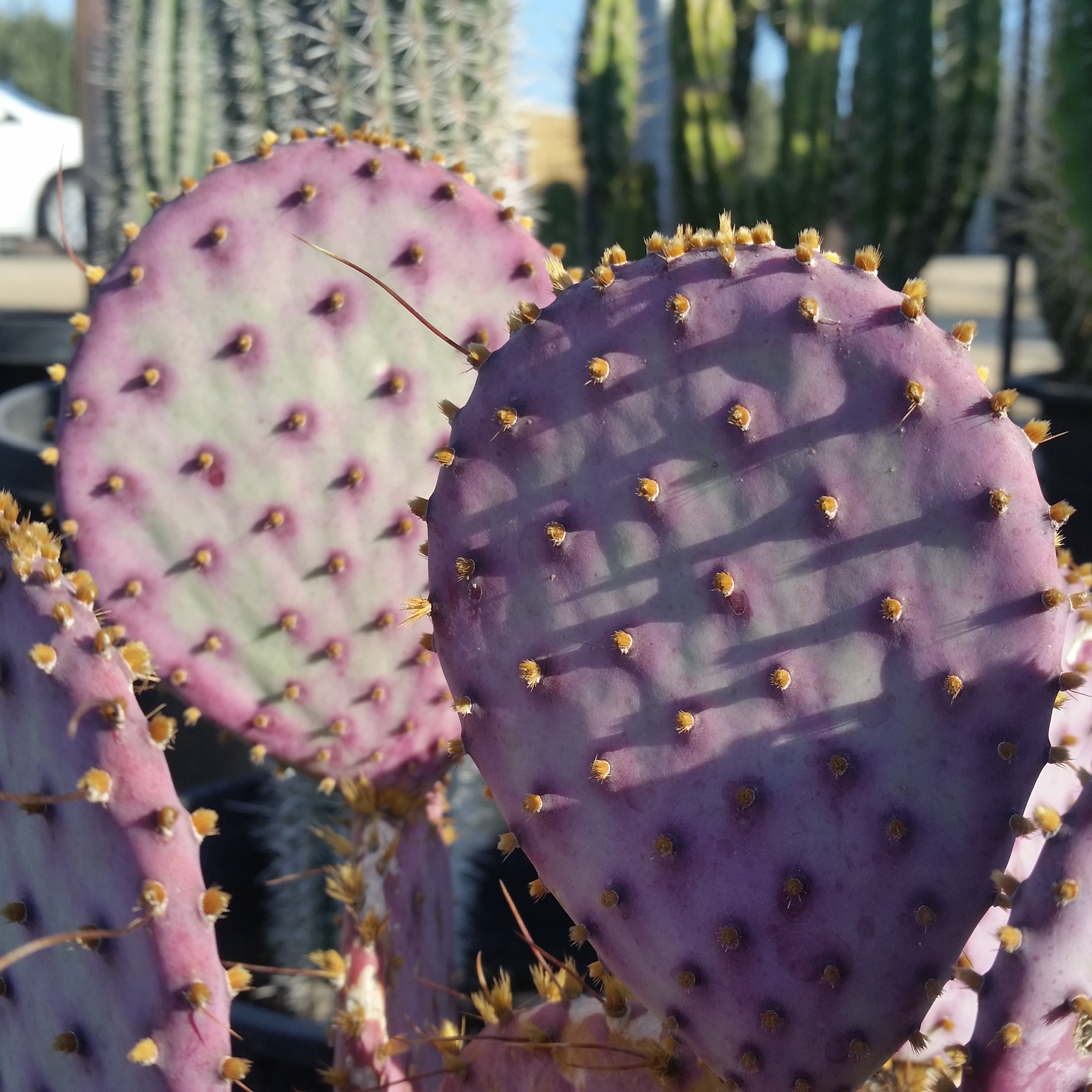
Opuntia santarita Prickly Pear Cactus Mid Valley Trees
Opuntia Santa Rita, or more commonly known as the Purple Prickly Pear, is a type of cactus that is native to Mexico. It is a drought-tolerant plant that does well in hot, dry climates and can even tolerate some frost. The Purple Prickly Pear is a low-maintenance plant that doesn't require much care.

Opuntia Santa Rita Cactus 10 seeds purple pads yellow Etsy
Frost-hardy, Santa Rita Prickly Pear is a very decorative cactus that adds beauty to the garden year-round. Typically grows up to 6-8 ft. tall (180-240 cm) and 8-10 ft. wide (240-300 cm). Performs best in full sun or light shade, in well-drained soils. This plant tolerates a wide variety of soils as long as they are well-draining.
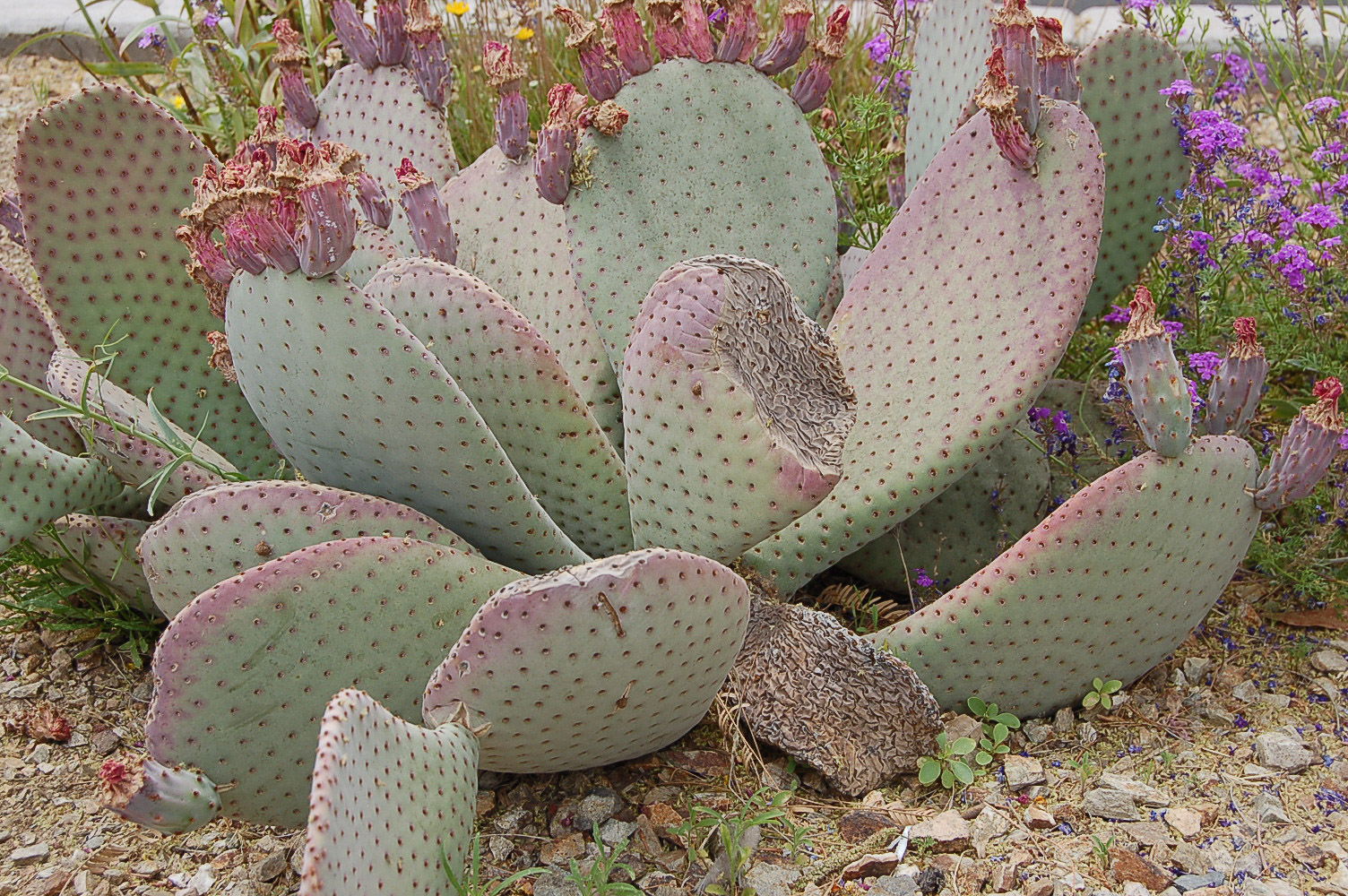
Opuntia santarita (Santa Rita purple prickly pear)
Opuntia gosseliniana, commonly known as the violet pricklypear, is a species of cactus that is native to Pima County, Arizona in the United States and Baja California, Chihuahua, and Sonora in Mexico.

Opuntia Gosseliniana var. SantaRita Purple Prickly Pear Cactus Lovely Succulents
Baby Rita Prickly Pear, An exceptional heat-loving dwarf hybrid with brilliant carmine colored flowers in a small padded, purple-skinned prickly pear. Thrives i. Opuntia x basilaris 'Baby Rita' Pronunciation: op-UN-shee-a. SKU #06950. USDA Zone. 7-11. Good to Grow.indoors: Change Location. Pre-Order for Spring Find In Store. Add To.

Opuntia 'Santa Rita' rare purple prickly pear cactus pad, unrooted (on Zensability
Opuntia santa-rita (Santa Rita Prickly Pear): Distinct for its blue-green pads that turn a purple hue when stressed, often with bright yellow flowers. Opuntia macrocentra (Long-spined Prickly Pear) : Native to the southwestern U.S. and northern Mexico, this species boasts blue-gray pads, strikingly long black spines, and bright red to yellow.
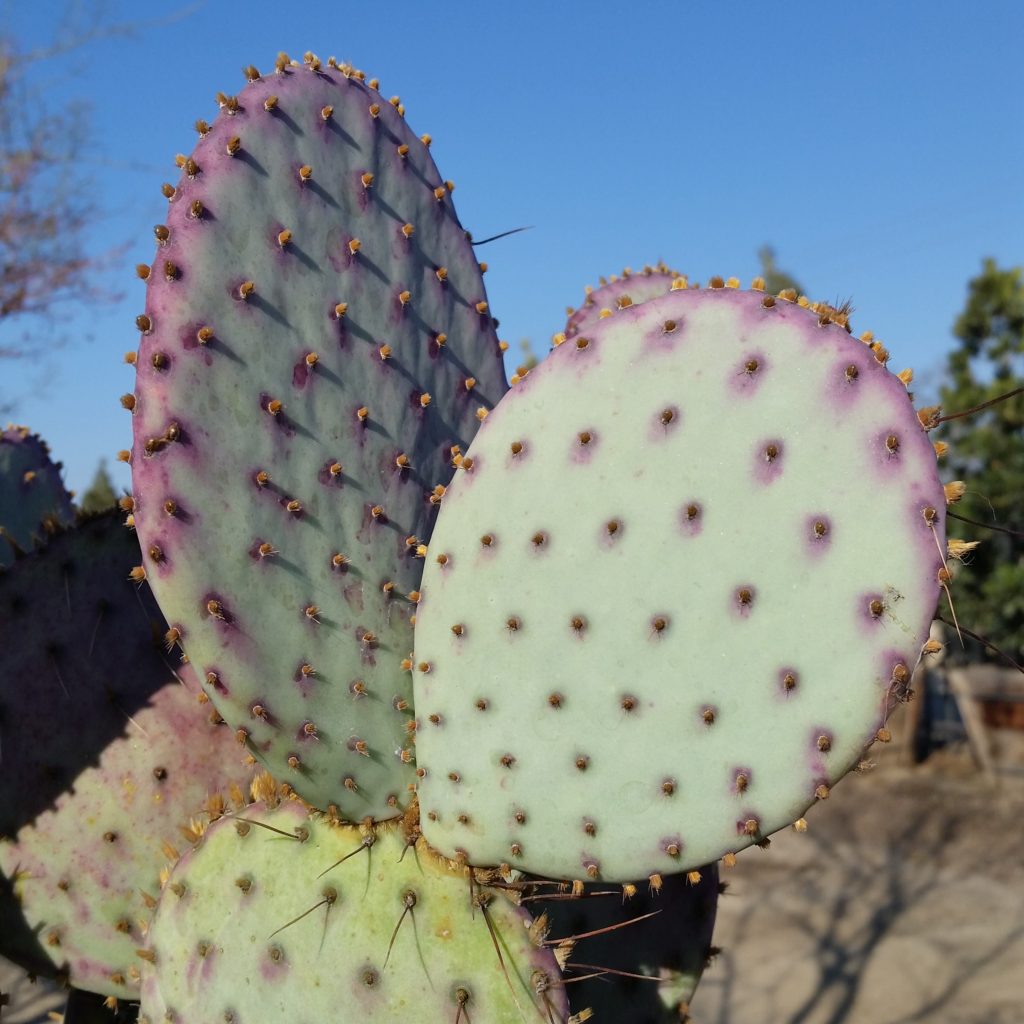
Opuntia santarita Prickly Pear Cactus Mid Valley Trees
Opuntia santa-rita seems to be pretty hardy here in Salt Lake City, Utah (zone 7b). Myself, and quite a few others have been growing this.Read More species for multiple years along the Wasatch Front.

Opuntia Santa Rita 'Baby' 4" Zensability
This low-growing prickly pear cactus forms large clumps and has a short trunk growing to heights of two to five feet with an equal spread. It produces flat, round, reddish-purple pads that grow to eight inches. The color of the pads intensifies when the plant is stressed by cold weather or drought conditions. During the summer months, the pads.
My opuntia Santa Rita is going crazy with new growth! succulents
Opuntia Santa-Rita is a member of the Opuntia family and is known for being cold hardy. It is able to survive temperatures down to 0°F, making it an ideal choice for areas with cold winters. The succulent's thick leaves and stems help retain moisture in its cells, allowing it to survive through frigid temperatures..

Opuntia santarita (Purple Prickly Pear) Zona Gardens
Description: The Opuntia gosseliniana var. Santa Rita is indigenous to southeastern Arizona (USA), Texas (USA), southern New Mexico (USA) and Mexico. It grows in desert grasslands, oak woodlands, flats and within sandy/rocky slopes. It is prized for its beautiful and decorative colors. Frost hardy and easy to cultivate.

Opuntia santa rita 'Tubac' Opuntia santa rita, Cacti and succulents, Cactus succulents
Opuntia chlorotica santa-rita is one of three varieties of the prickly pear cactus in the Opuntia chlorotica complex. The varieties are santa-rita, gosseliniana, and chlorotica ( Ferguson 1988 ). S anta-rita is the most handsome. The three varieties blend into each other over their range where they overlap and are reported to be closely related.

Opuntia 'Santa Rita' rare purple prickly pear cactus pad, unrooted (on Zensability
Opuntia santa-rita: An evergreen cactus / succulent with blue and green foliage and yellow flowers in spring and summer followed by red fruit. It contributes glaucous texture to the garden. Attractive to bees and hummingbirds. To grow well, it prefers sun - mostly sun and occasional - low water. Drought tolerant once established. Prefers to be dry in winter. Grows best in well-drained, lean.
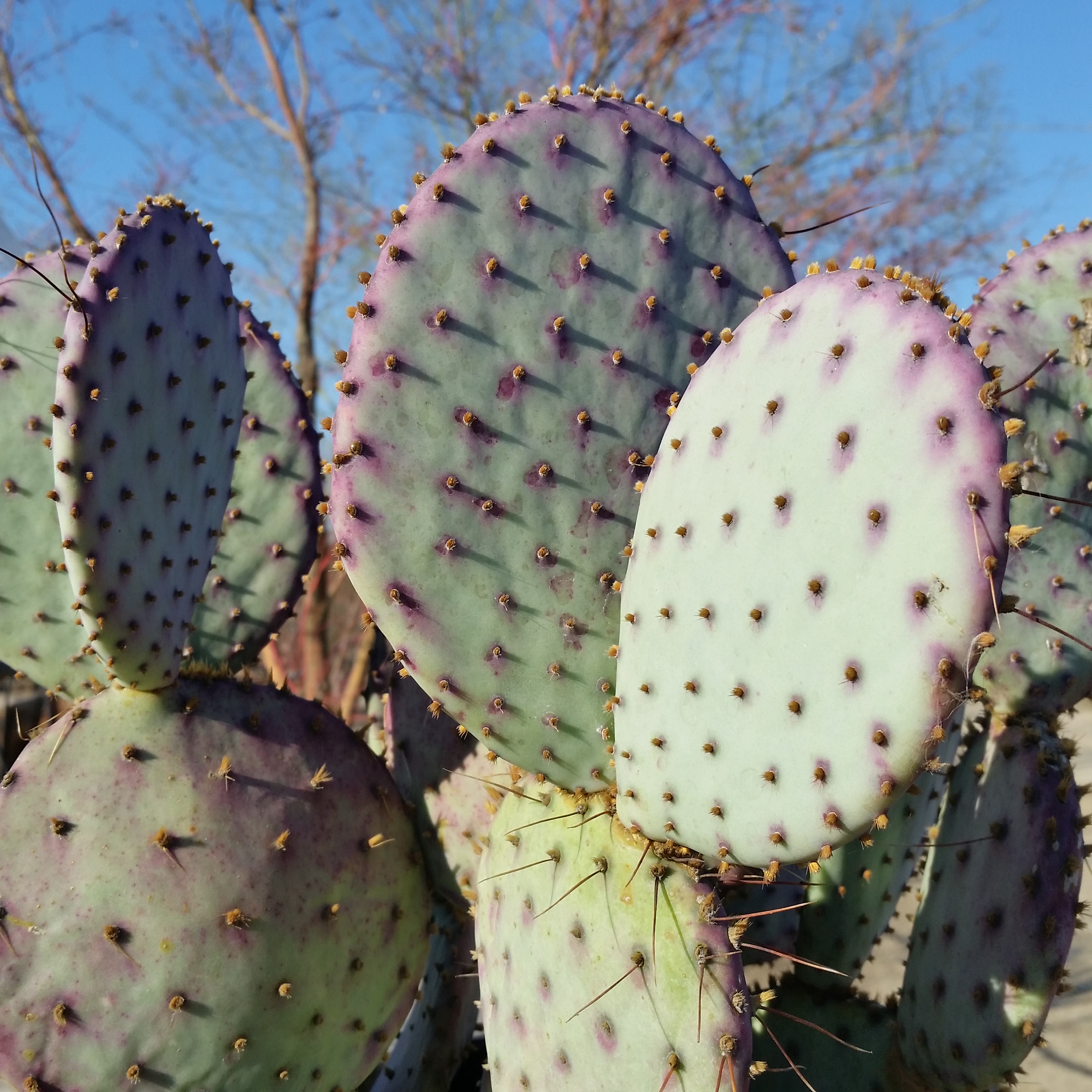
Opuntia santarita Prickly Pear Cactus Mid Valley Trees
Grown for its intriguing color, Opuntia santa-rita Tubac™ (Santa Rita Prickly Pear) is an upright, shrubby succulent with large round fleshy pads. Covered with spines, the pads turn rich purple in winter before changing back to soft blue-gray with warmer temperatures. This purple pad coloration also intensifies in direct sunlight and drought. Sitting on the outer edges of the pads, large.
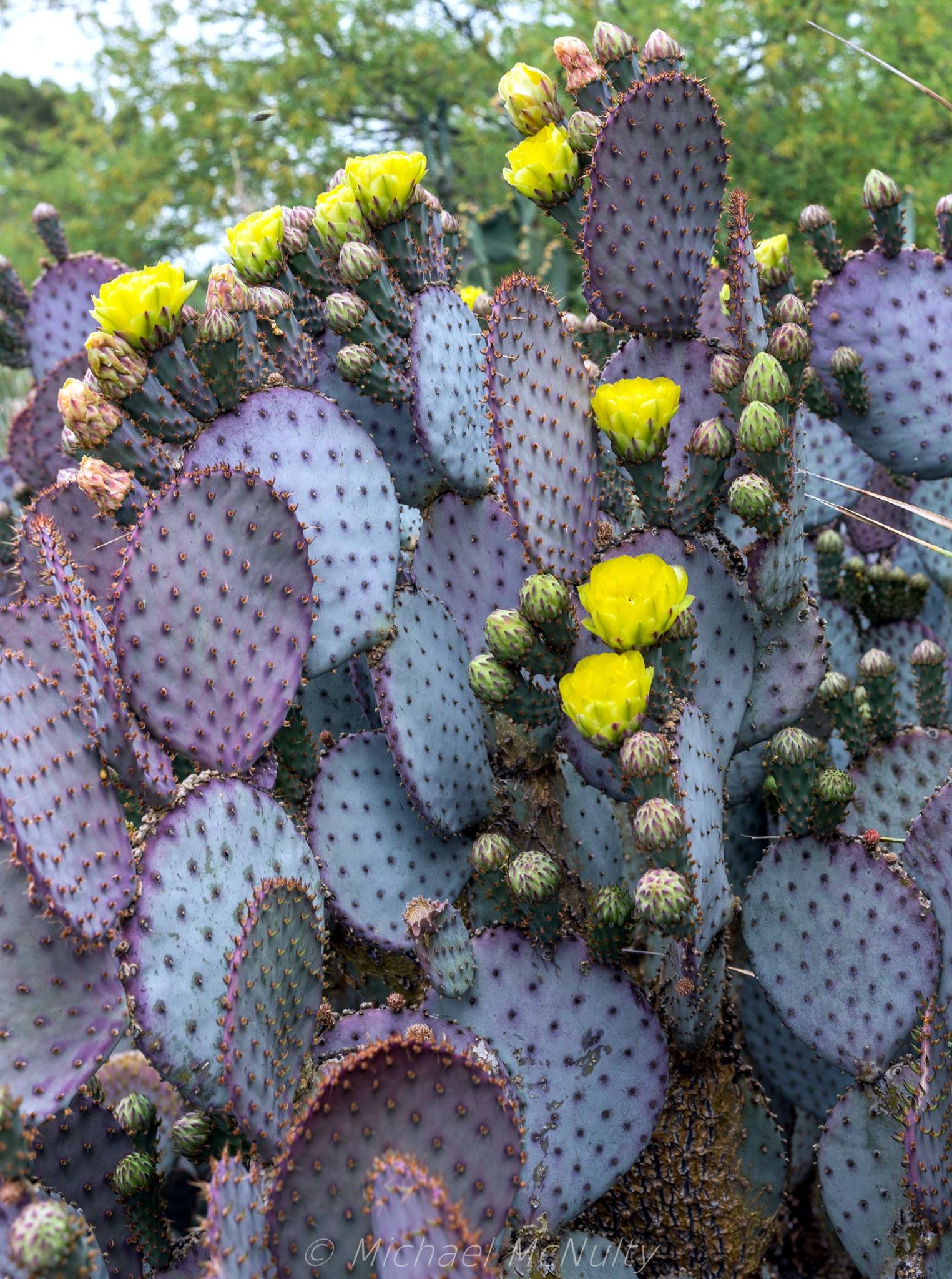
Opuntia chlorotica santarita
Opuntia santa-rita is an attractive species with limited distribution in far south Arizona, mostly around Nogales - between the Baboquivari and Santa Rita mountains. The mostly or completely spineless pads are bluish green in color with a distinct purple tinge, more evident during dry or cold weather, and they have a neat, regular array of areoles bearing yellow or brown glochids.

Opuntia Santa Rita 6 pot Baby Rita Etsy
Opuntia santa-rita Santa Rita prickly pear, purple prickly pear. Zones: 7-11. Height/Spread: 6 to 8 feet tall, 8 to 10 feet wide. Exposure: Full sun. Bloom time: June-July. Color: Blue-gray pads turn purple in winter, yellow flowers followed by purple fruit. Birds are attracted to the small purple fruit of this colorful Opuntia.

Opuntia Santa Rita. 2 inch rooted cutting Violet cactus. Very Etsy
Opuntia violacea var. santa-rita. Large, beautiful yellow flowers rest on the outer edges of spine-covered, fleshy succulent pads. In winter the pads turn to a rich purple color and return to a soft blue-gray with warmer weather. An excellent choice for year-round beauty in arid xeric landscapes or containers. Evergreen.